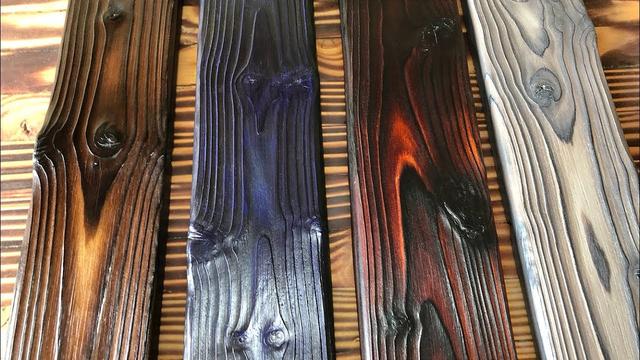The Appeal of a Burnt Wood Finish
Photo: istockphoto.com
Whether you’re ready to build a new wood deck, furniture, or wood wall paneling—or aim to spruce up existing ones—you’ll ultimately want both beauty and longevity. While chemical preservatives can be applied to untreated wood to prolong its life, and stain or paint can enhance visual appeal, these time-consuming treatments must be undertaken separately. So why not consider shou sugi ban (pronounced shoh shoo-gee bahn), a much-buzzed-about technique that allows any DIYer comfortable with using a blowtorch to fortify and beautify wood in a single process? Read on for the 411 on the technique that produces a burnt wood finish, plus tips for a successful application.
Photo: istockphoto.com
What is shou sugi ban, and how is it used?
Shou sugi ban is the term commonly used in the West for yakisugi, an ancient Japanese technique for preserving wood with fire. Literally translating to “burnt cedar board” in English, shou sugi ban traditionally involves scorching wooden boards with a torch or controlled fire, cooling the wood, softening the char with a wire brush, removing dust, and, if desired, topping the wood with natural oil. The process fortifies the wood (more on how below) and provides a matte black finish with elegant silver streaks, resembling obsidian rock.

Though examples of shou sugi ban were seen as early as 700 A.D., the technique generally dates back to 18th-century Japan, where it was primarily applied to wooden boards used in exterior siding to weatherproof them and thereby prolong their life. Japanese cedar, called sugi, was the traditional wood species used because it was thought to produce the most pronounced charred effect.
In recent years, shou sugi ban has been used on other softwood species in addition cedar for interior and exterior applications, both on wooden boards used in the construction of large surfaces, such as siding, decks, and wall paneling, and on smaller pre-built woodworks, such as tables, chairs, and dressers. It is prized not only for the protective qualities it confers on wood, but also the striking burnt wood finish it renders, which is versatile enough for both rustic and modern homes. While DIYers can create the finish simply by wielding a blowtorch, pre-made shou sugi ban-treated woodworks abound, from coffee tables (available on Amazon) to decorative signs (also available on Amazon).
View this post on InstagramA post shared by Elizabeth & Scott Mathieson (@mhousedevelopment) on
What are the benefits of a burnt wood finish?
Here’s how the shou sugi ban treatment enhances wood:
View this post on InstagramA post shared by Chris & Meghan Zimmerman (@zimmermakers) on
How should DIYers approach the shou sugi ban process for the best results?
For a durable burnt wood finish that will last 50 years or more, follow these shou sugi ban application tips:







